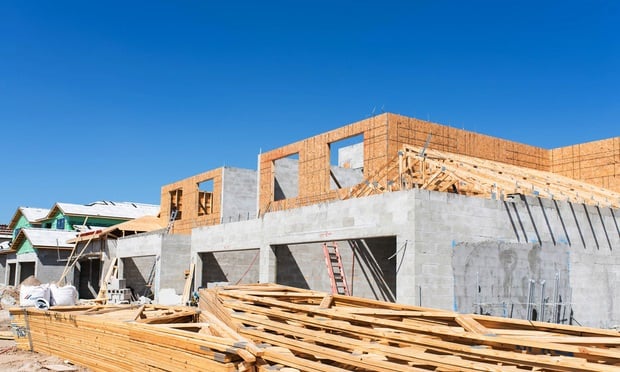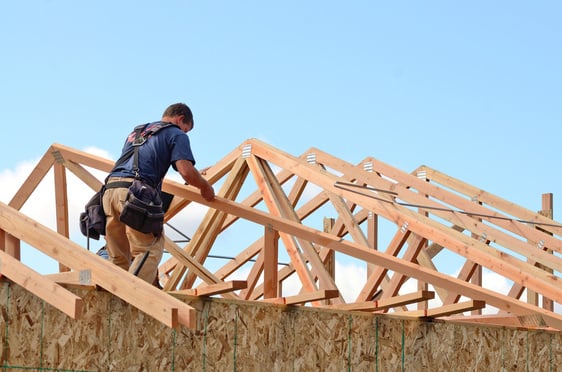SOUTHERN CALIFORNIA—JLL recently released its list of top 18 distribution markets. Markets from New Jersey, to Southeast Texas, to Florida and Minneapolis made the list. In addition, five West Coast markets made the cut. In this exclusive multi-part Q&A, GlobeSt.com chats with multiple industry sources on the West Coast industrial markets including SoCal, NorCal/Reno, Mountain Region, Desert Region and Pac Northwest.
Louis Tomaselli, a JLL senior managing director, talked to us about all things SoCal below, where he says that conversion of current big box retail stores to warehouse might be on the horizon in the region.
GlobeSt.com: Please describe one factor that makes Southern California a top distribution market.
Louis Tomaselli: I think the single most important factor is that So Cal has a population of 22 Million people…roughly 60% of all California's total population, situated in a region that is also home to two of America's top seaports with major rail connectivity to other major markets throughout the country…our US GDP is 70% consumer driven, so that makes So Cal the most dynamic target for delivery of products today and on go forward. And not to forget, I think CA has way more early adopters who clamor to have the latest and greatest of everything.
GlobeSt.com: What opportunities for industrial investors or tenants exist in Southern California?
Tomaselli: Strong leasing fundamentals, strength and security of investment if you are an investor, and long term certainty of your products being available to that large and growing population base for occupiers, along with distribution capabilities to other markets. As arguable the number 1 gateway market in the US, as long as you purchase Class A quality or occupy Class A warehouse space, you are certain to be safe….in every slow down, Class A always trades even if at a lower price, and always recovers first.
GlobeSt.com: What submarkets are hidden gem areas for distribution that many aren't talking about? Why should we be paying attention to them?
Tomaselli: An excellent example is the 56 acre former Albertson's DC site in El Monte purchased by Goodman Birtcher just a month ago…the best supply chain driven locations are based on access to ports, rail, freeways, arterials, for trailer and container transportation of all kinds…and the ability to then turn around and ship throughout the region…While El Monte is not a “known logistics or warehouse city” it is an A class location based on all these criteria. Supply chain models don't measure cities….
GlobeSt.com: What distribution trends will we be talking about in your market at this time next year?
Tomaselli: I think we will see more last mile, same day, next hour delivery warehouses throughout So Cal, which is obvious, but also a possible conversion of current big box retail stores to warehouse and DC locations if and when the bricks and mortar retail value of those real estate locations becomes a burden. I also believe that while the e-commerce facilities across So Cal are vital I think that most of the retailers have placed their bets on are doing so now and that the 1 million square feet plus segment will slow down in favor of the smaller DCs that can accommodate a broader range of users like 3 PLs and traditional warehouse DCs users.
SOUTHERN CALIFORNIA—JLL recently released its list of top 18 distribution markets. Markets from New Jersey, to Southeast Texas, to Florida and Minneapolis made the list. In addition, five West Coast markets made the cut. In this exclusive multi-part Q&A, GlobeSt.com chats with multiple industry sources on the West Coast industrial markets including SoCal, NorCal/Reno, Mountain Region, Desert Region and Pac Northwest.
Louis Tomaselli, a JLL senior managing director, talked to us about all things SoCal below, where he says that conversion of current big box retail stores to warehouse might be on the horizon in the region.
GlobeSt.com: Please describe one factor that makes Southern California a top distribution market.
Louis Tomaselli: I think the single most important factor is that So Cal has a population of 22 Million people…roughly 60% of all California's total population, situated in a region that is also home to two of America's top seaports with major rail connectivity to other major markets throughout the country…our US GDP is 70% consumer driven, so that makes So Cal the most dynamic target for delivery of products today and on go forward. And not to forget, I think CA has way more early adopters who clamor to have the latest and greatest of everything.
GlobeSt.com: What opportunities for industrial investors or tenants exist in Southern California?
Tomaselli: Strong leasing fundamentals, strength and security of investment if you are an investor, and long term certainty of your products being available to that large and growing population base for occupiers, along with distribution capabilities to other markets. As arguable the number 1 gateway market in the US, as long as you purchase Class A quality or occupy Class A warehouse space, you are certain to be safe….in every slow down, Class A always trades even if at a lower price, and always recovers first.
GlobeSt.com: What submarkets are hidden gem areas for distribution that many aren't talking about? Why should we be paying attention to them?
Tomaselli: An excellent example is the 56 acre former Albertson's DC site in El Monte purchased by Goodman Birtcher just a month ago…the best supply chain driven locations are based on access to ports, rail, freeways, arterials, for trailer and container transportation of all kinds…and the ability to then turn around and ship throughout the region…While El Monte is not a “known logistics or warehouse city” it is an A class location based on all these criteria. Supply chain models don't measure cities….
GlobeSt.com: What distribution trends will we be talking about in your market at this time next year?
Tomaselli: I think we will see more last mile, same day, next hour delivery warehouses throughout So Cal, which is obvious, but also a possible conversion of current big box retail stores to warehouse and DC locations if and when the bricks and mortar retail value of those real estate locations becomes a burden. I also believe that while the e-commerce facilities across So Cal are vital I think that most of the retailers have placed their bets on are doing so now and that the 1 million square feet plus segment will slow down in favor of the smaller DCs that can accommodate a broader range of users like 3 PLs and traditional warehouse DCs users.
Continue Reading for Free
Register and gain access to:
- Breaking commercial real estate news and analysis, on-site and via our newsletters and custom alerts
- Educational webcasts, white papers, and ebooks from industry thought leaders
- Critical coverage of the property casualty insurance and financial advisory markets on our other ALM sites, PropertyCasualty360 and ThinkAdvisor
Already have an account? Sign In Now
© 2024 ALM Global, LLC, All Rights Reserved. Request academic re-use from www.copyright.com. All other uses, submit a request to [email protected]. For more information visit Asset & Logo Licensing.









